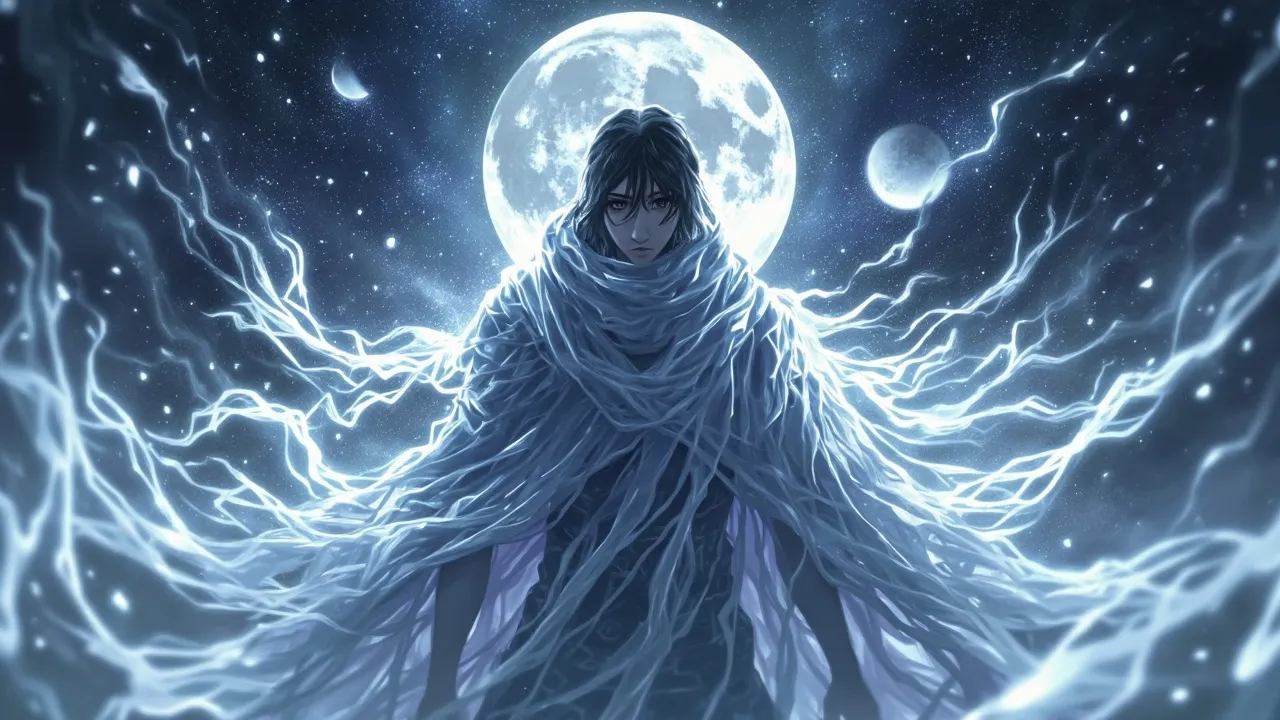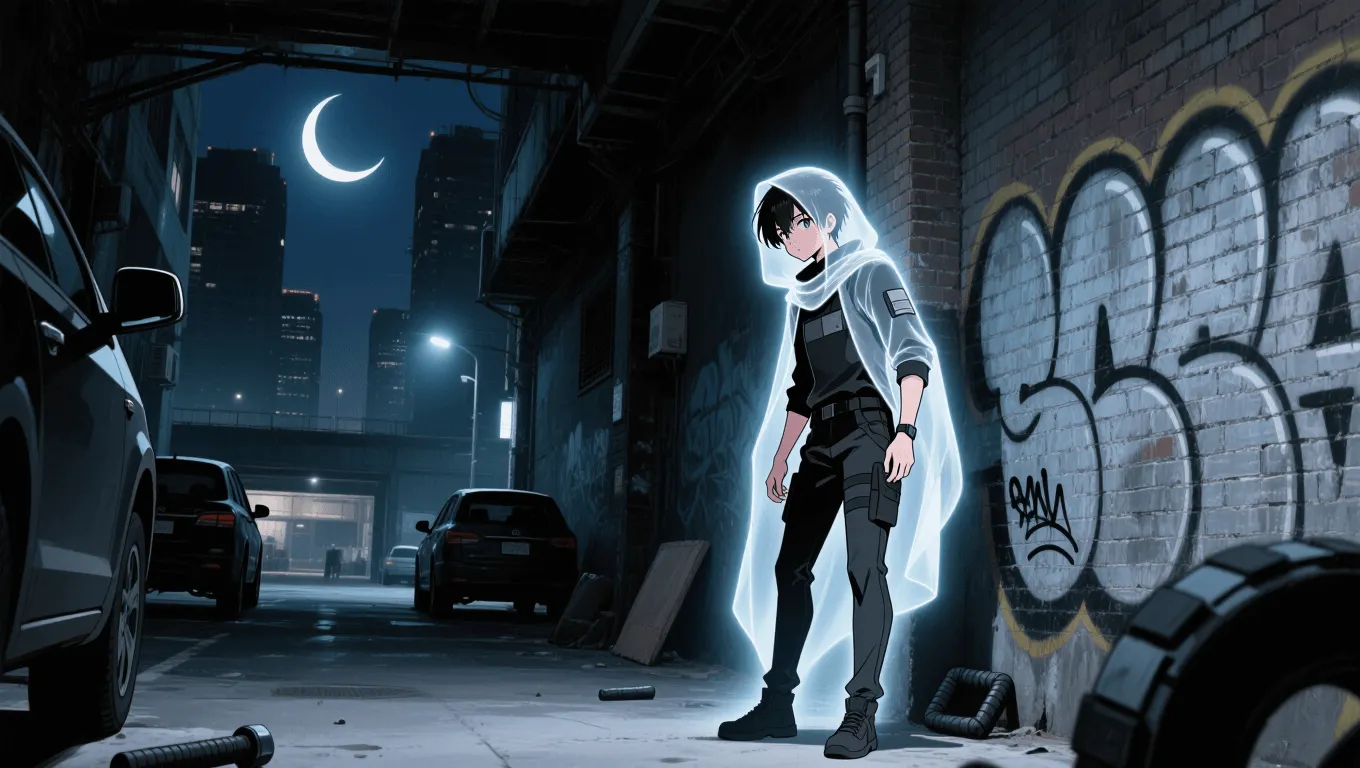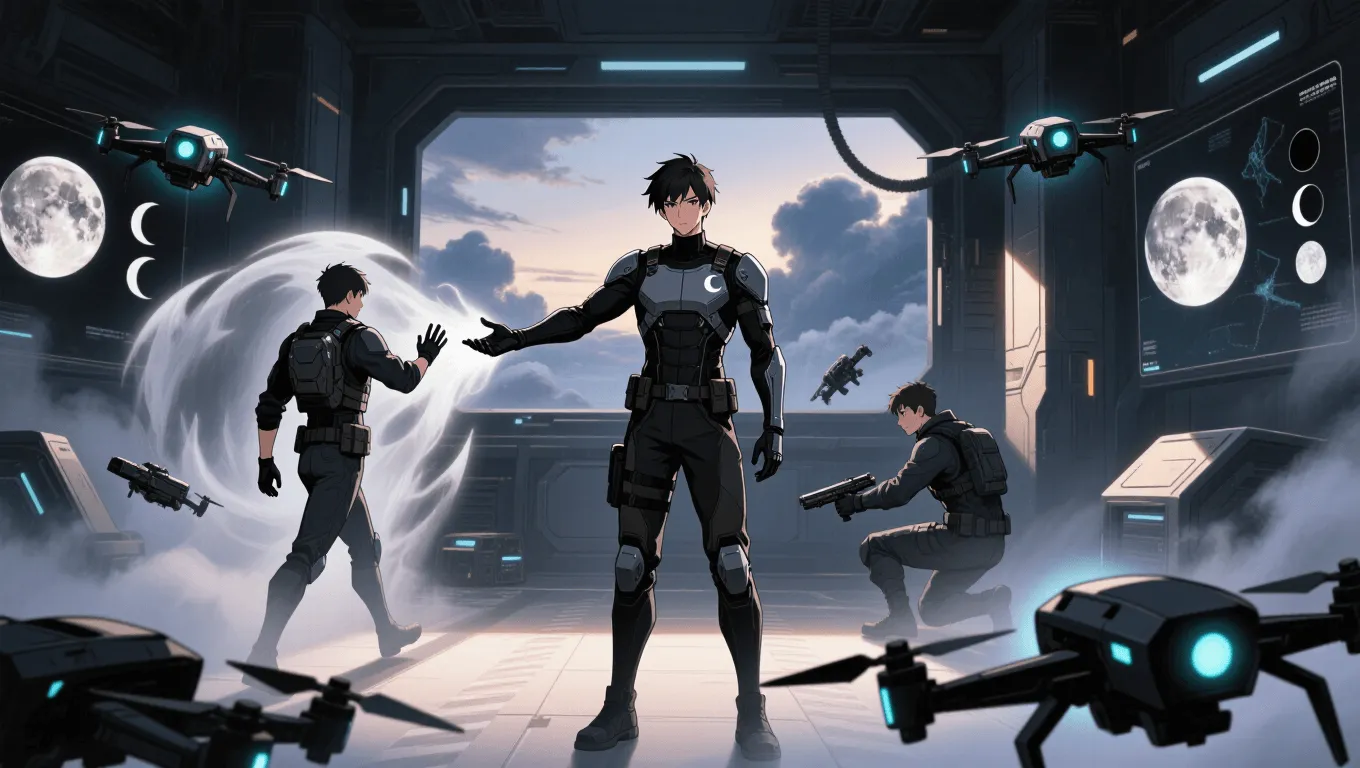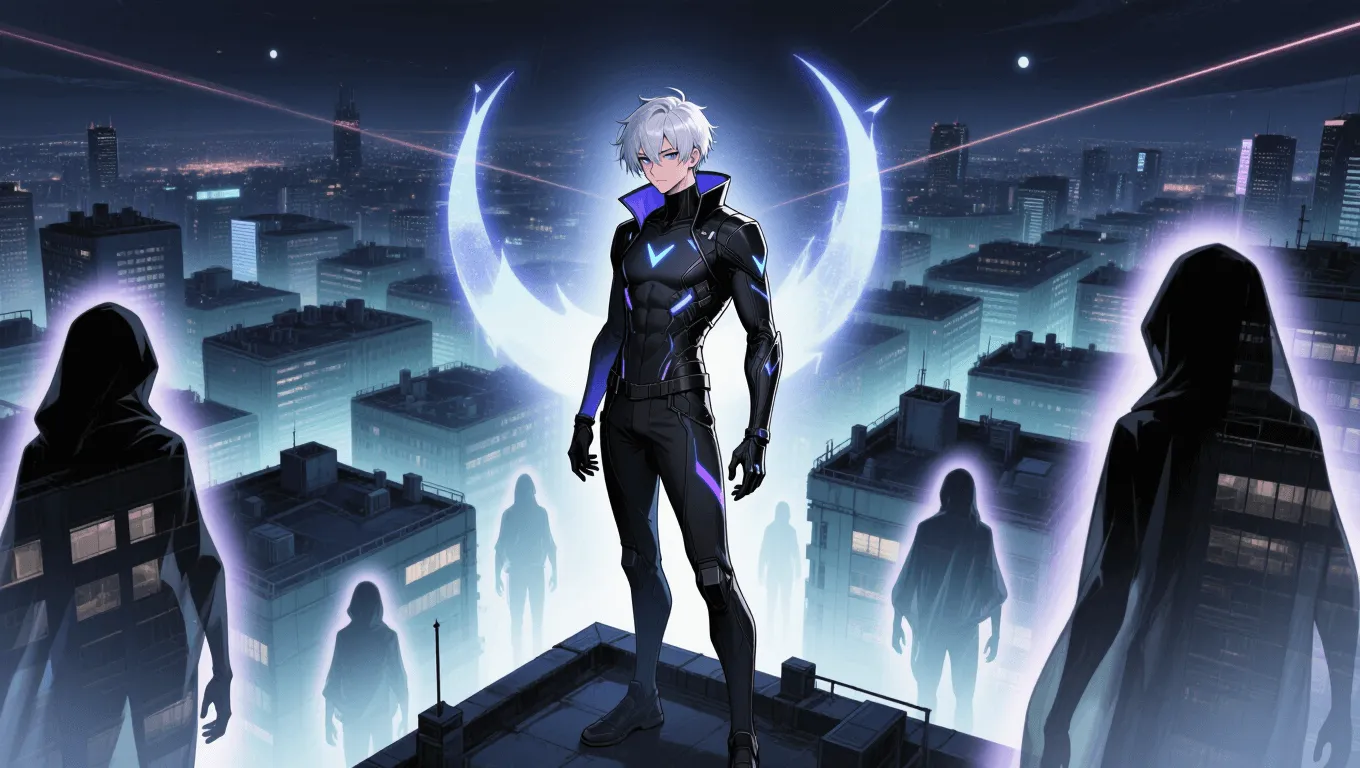Lunar Shroud: Power Guide, Levels, Limits, and Tactics

Lunar Shroud Video Demo 🎬
Table of Contents
- Lunar Shroud Video Demo 🎬
- What Is Lunar Shroud
- Core Abilities of Lunar Shroud
- Application / Tactical Advantages in Combat
- Level: Level 1 🏙️, Level 2 🌇, Level 3 🌃
- Limitations of Using the Lunar Shroud
- Weakness Against What Other Superpowers
- Synergistic Power Combos
- Known Users
- Practical Tips and Build Notes
- Frequently Associated Keywords
What Is Lunar Shroud
Lunar Shroud is a stealth-focused superpower that lets a user drape themselves and their surroundings in concentrated moonlight and cool shadow. With Lunar Shroud, a character can bend low-spectrum light, blur their outline, and channel lunar energy for enhanced concealment, agility, and precision. Typically tied to moon phases, this ability blends moonlight manipulation, noctokinesis, and shadow veiling into a single, tactical toolkit. Visitors exploring related abilities can browse the complete list on the superpower wiki or try the random superpower generator.
Core Abilities of Lunar Shroud
Moonlight Cloak
The signature effect forms a semi-translucent mantle of pale radiance that diffuses incoming light. It disrupts visual tracking, mutes color, and reduces silhouette definition, functioning like adaptive camouflage in dim or indirect light.
Shadow Veil Projection
Users can extend the shroud a short distance to create a dim field. Inside this field, sound slightly dampens, reflective glints vanish, and movement leaves fewer visual traces. It does not create total darkness; it sculpts shadow to favor the user.
Lunar Energy Channeling
The shroud acts as a conduit for lunar energy, granting steadier pulse rate, lower perceived exertion, and heightened focus. Many users report improved fine-motor control, leading to quiet footwork and precise strikes.
Night-Adaptive Vision
Within the shroud, the eyes filter glare and enhance contrast, approximating superior night vision without the tunnel-vision effect of goggles. Sudden flashes still register, but recovery is faster than normal.
Phase-Linked Amplification
Power scales with moon phases. During a full moon, range, duration, and resilience improve. During a new moon, the shroud tends to be thinner but offers deeper shadow blending. Eclipses can trigger rare “eclipse form,” combining bright rim-light with deep-core opacity for exceptional concealment.
Thermal Softening
The shroud slightly cools surface temperature, decreasing thermal signature. It won’t erase heat entirely, but it can confuse lower-grade thermal optics, buying seconds that matter in close quarters.
Silent Step and Drift
By microcushioning footfalls and redirecting small eddies of air, users move with reduced acoustic footprint. The effect is strongest on hard surfaces and weakest on gravel or foliage.
Application / Tactical Advantages in Combat
Ambush and Disengage
Lunar Shroud excels at entry and exit. A user can fade along wall edges, skim under balcony shadows, and vanish through light-splashed corridors where typical darkness would fail. In urban night operations, this enables proximity without detection, ideal for hostage extraction, scouting, or placing trackers.
Counter-Sniper Movement
The shroud breaks crisp silhouette lines and softens specular highlights on gear. Against opponents relying on optics, the user can relocate between cover with less risk of being acquired, especially under mixed moonlight and streetlamps.
Melee Precision
Enhanced focus and night-adaptive vision support decisive takedowns. The user reads micro-motions in dim light, timing grapples and disarms. The thermal softening also reduces the “heat shimmer” around limbs that can betray movement to high-end sensors.
Anti-Drone Evasion
Consumer-grade drones often depend on visual lock and basic IR. The shroud’s light diffusion plus thermal softening interrupts target-sticky algorithms at marginal distances, forcing manual control and giving the user windows to escape.
Crowd Control Without Panic
Because the shroud is subtle, it avoids triggering mass alarm. In protective missions, one can calmly relocate VIPs through “soft shadow corridors,” keeping attention low while maintaining situational awareness.
Level: Level 1 🏙️, Level 2 🌇, Level 3 🌃
Level 1 🏙️ — Street-Shadow Initiate

-
Profile: New practitioner with basic moonlight cloak and limited shadow veil.
-
Range & Duration: Self-only or arm’s length; a few minutes of steady use.
-
Capabilities: Blur silhouette, moderate night vision, quieter steps. Works best under quarter-moon to full moon.
-
Tactics: Stick to walls, overhangs, and parked vehicles. Use short, deliberate moves. Avoid open plazas under harsh LEDs.
-
Training Focus: Breath control for steady cloak, footwork drills on concrete and tile, gear matte-finishing to reduce reflections.
-
Common Mistake: Overreliance in bright interiors where the shroud appears as a faint halo rather than true concealment.
Level 2 🌇 — Nocturne Operative

-
Profile: Experienced user projecting a small shadow field to partners or equipment.
-
Range & Duration: Up to a small room with intermittent pulses over 20–30 minutes.
-
Capabilities: Stronger thermal softening, better drone evasion, partial eclipse form under cloudy skies.
-
Tactics: Orchestrate staggered movement of a small team, pass off “shadow relay” to cover last-man transitions, disrupt optics with angled surfaces.
-
Training Focus: Phase reading—planning routes by moon angle, building a “lunar map” of brighter and dimmer patches.
-
Common Mistake: Growing static—staying in one spot too long, which lets enemy sensors adapt to the shroud’s spectral pattern.
Level 3 🌃 — Eclipse Warden

-
Profile: Elite practitioner with phase-linked amplification and controlled eclipse form.
-
Range & Duration: Multi-room environments or alley networks; sustained use over an hour with rest cycles.
-
Capabilities: Wide-area light sculpting, acoustic dampening significant enough to mask gear clinks, counter-illumination to fracture laser designators at oblique angles.
-
Tactics: Shape “shadow lanes” across rooftops, split detection funnels, and run decoy silhouettes by bleeding the shroud’s edge along reflective glass.
-
Training Focus: Biofeedback loops to manage body heat, precision timing with lunar transit, integrating with allies using ranged or area-denial powers.
-
Common Mistake: Overextending eclipse form near high-wattage floods, which can cause sudden cloak collapse.
Limitations of Using the Lunar Shroud
-
Light Dependence: The power optimizes around moonlight ratios. In sterile, overlit interiors or under noon sun, performance drops sharply. Users may only achieve a thin cloak with minimal diffusion.
-
Spectral Fingerprints: High-grade sensors tuned to low-spectrum anomalies can detect the shroud. While it confuses basic IR, advanced multi-band systems can still flag presence.
-
Energy and Cooling Costs: Thermal softening draws on the user’s physiology. Extended use can induce chill, slower reaction times, or post-mission fatigue.
-
Weather Variability: Heavy fog, snow glare, or rain scatter can complicate the shroud’s diffusion model, reducing predictability.
-
Line-of-Sight Constraints: The shroud bends and sculpts light; it cannot pass through opaque barriers. Corners and tight corridors require careful edge handling.
-
Phase Windows: Full-moon advantages come with trade-offs—brighter environments that may spotlight movement if the user breaks rhythm. New-moon depth helps hiding but reduces projection radius.
Weakness Against What Other Superpowers
-
Radiant Aura / Solar Flare: Direct, high-intensity light saturates the shroud’s diffusion, stripping camouflage and shocking night-adaptive vision.
-
Electromagnetic Vision / Multispectral Perception: Users who see across bands (UV, microwave, radar) bypass the shroud’s visual tricks entirely.
-
Wind Manipulation / Aerokinesis: Sudden gusts can ripple the cloak, revealing outlines or disturbing carefully dampened sound.
-
Echo-location / Sonar Sense: Acoustic mapping defeats visual deception; even with dampening, body mass remains trackable.
-
Photonic Constructs: Hard-light barriers and beams generate clean edges that interfere with shadow lanes and expose movement arcs.
-
Heat Surge / Pyrokinesis: Rapid temperature spikes nullify thermal softening and create glaring thermal contrast.
Synergistic Power Combos
-
Shadowstep Teleport + Lunar Shroud: Use the shroud to obscure pre- and post-blink signatures, preventing opponents from predicting teleport exit points.
-
Silence Field + Night-Adaptive Vision: Layer a broader hush with the user’s enhanced vision for surgical extractions in populated zones.
-
Gravity Pulse Control: Slightly lower local gravity to reduce footfall force while the shroud muffles residual sound, perfect for rooftop traversal.
-
Psychic Misdirection: Pair subtle visual concealment with gentle attention-nudging to make the mind slide off the user’s presence.
-
Electrostatic Cling: With gear stabilized against clatter, the shroud’s acoustic dampening yields near-silent movement across vents or metal scaffolds.
-
Hydromancy Mist: A thin mist under moonlight expands the shroud’s canvas, creating layered parallax that frustrates depth perception.
Known Users
-
Khonshu’s Fist (interpretations vary across media): A vigilante who operates under moonlit codes of protection. Their equipment choices—matte surfaces, cape geometry, and rooftop routes—mirror many best practices of Lunar Shroud tactics. Learn more about the character at Moon Knight.
-
Celestial Sentry of the Tidal Ward: A coastal guardian who times patrols to spring tides, leveraging phase-linked amplification for marine rescues.
-
The Eclipse Wardens: A covert team that specializes in urban search-and-rescue during blackouts, using shadow lanes to bypass blocked streets and drones.
Practical Tips and Build Notes
Gear Integration
-
Matte All Surfaces: Helmets, visors, and weapon housings should be non-reflective to prevent pinging under stray beams.
-
Edge-Breaking Silhouettes: Layered fabrics and asymmetrical capes reduce recognizable body outlines.
-
Thermal Buffering: Phase-change inserts keep body heat even, supporting thermal softening.
Movement Doctrine
-
Rhythmic Steps: Sync breathing with steps to maintain cloak stability.
-
Angular Routes: Move diagonally across light sources; straight lines create predictable trails.
-
Pause-Scan-Shift: Short halts let the shroud re-drape, avoiding image persistence on cameras.
Training and Conditioning
-
Cold Acclimation: Controlled exposure improves tolerance for the shroud’s cooling effect.
-
Phase Literacy: Study lunar rise/set, altitude, and albedo to forecast nightly performance.
-
Sensor Games: Practice against drones and handheld multispectral viewers to learn tells and counters.
Frequently Associated Keywords
For those cataloging abilities, Lunar Shroud often appears alongside moonlight manipulation, noctokinesis, shadow veil, lunar energy channeling, eclipse form, night vision, stealth, thermal signature dampening, phase-linked amplification, crescent aura, and tidal influence. Explore related powers on superpower-wiki or spin up ideas with the random superpower generator.
